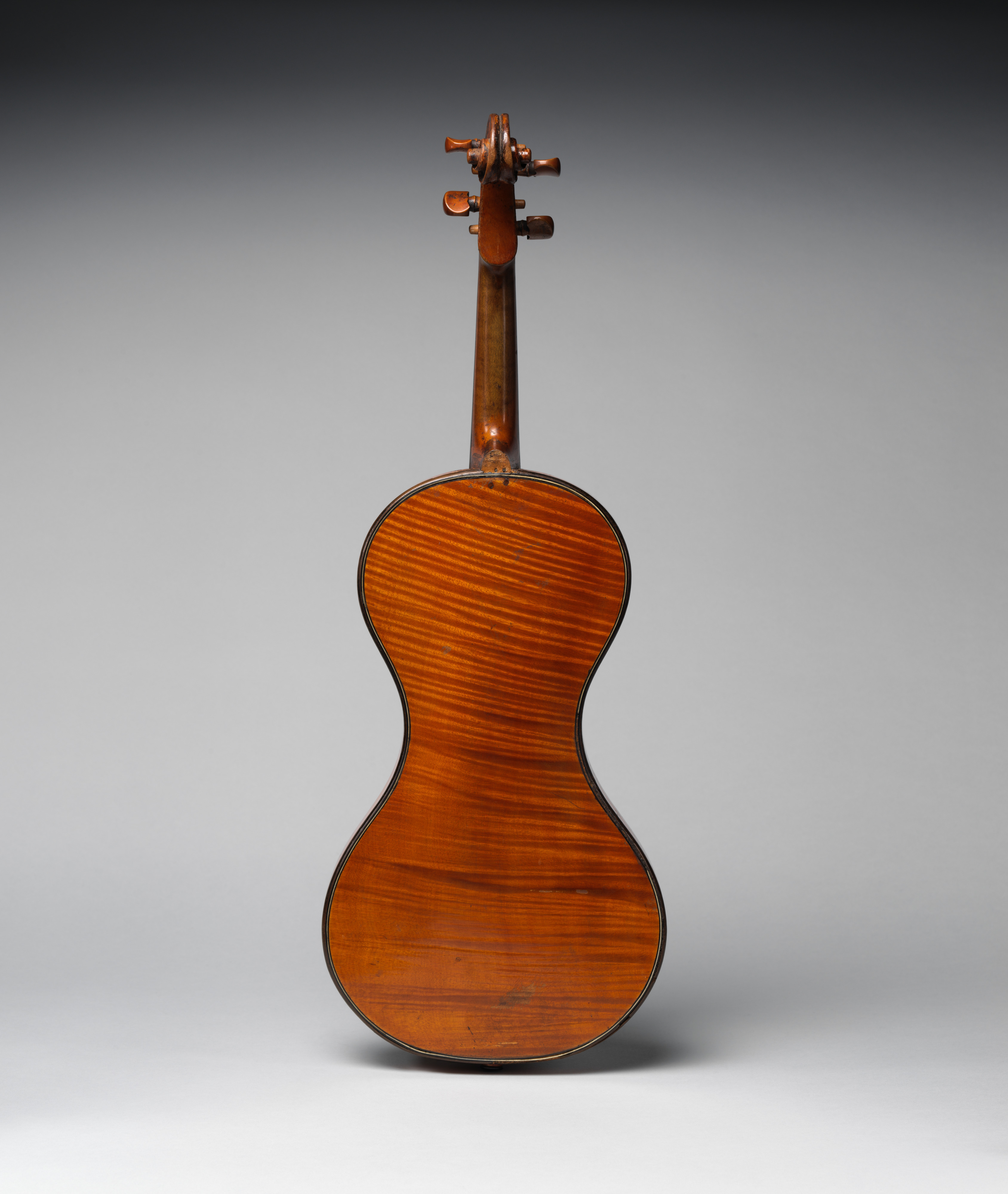"Chanot model" Violin
Not on view
François Chanot learned to build violins in his father's workshop in Mirecourt, France. After serving a stint in the French navy, he returned to his father's shop and began experimenting with making violins according to the latest acoustical theories. He moved to Paris around 1818, right as he introduced a cornerless model violin. His model also had a scroll that was bent back, away from the fingerboard, and oblong soundholes. This unsigned violin was built according to Chanot's design.
Chanot-type cornerless model, one-piece spruce belly of wide, irregular grain with oblong soundholes edged with black and white stripes (one white stripe missing); one-piece quarter-cut maple back with figure slanting left to right, figured maple ribs, brittle yellow varnish; purfling maybe ebony and synthetic; ebonized hardwood edging; figured maple neck; pegbox and reversed scroll; old boxwood pegs, stained pear fingerboard, top and back not overhanging; strings originally secured to belly, now converted to tailpiece and original fastener replaced by piece of ebonized hardwood; saddle and endpin also later, Accompanied by an inexpensive German bow, Bausch school, mid-19th century.
Due to rights restrictions, this image cannot be enlarged, viewed at full screen, or downloaded.
This artwork is meant to be viewed from right to left. Scroll left to view more.



